Disinfection of Animal Stables
Surface disinfection in livestock barns
Surface disinfection in livestock barns
Careful disinfection of poultry farming facilities is crucial to prevent the spread of pathogens and maintain the health of the animals.
In the past, products based on aldehydes were often used for this purpose. However, due to their problematic environmental impact and effectiveness gaps in cooler weather conditions, oxidizing, oxygen-releasing disinfectants are now much more popular.
In this context, Sanosil disinfectants with boosted hydrogen peroxide have proven to be highly effective and are a preferred choice for barn disinfection. Sanosil offers a range of properties that make it particularly suitable for this purpose.

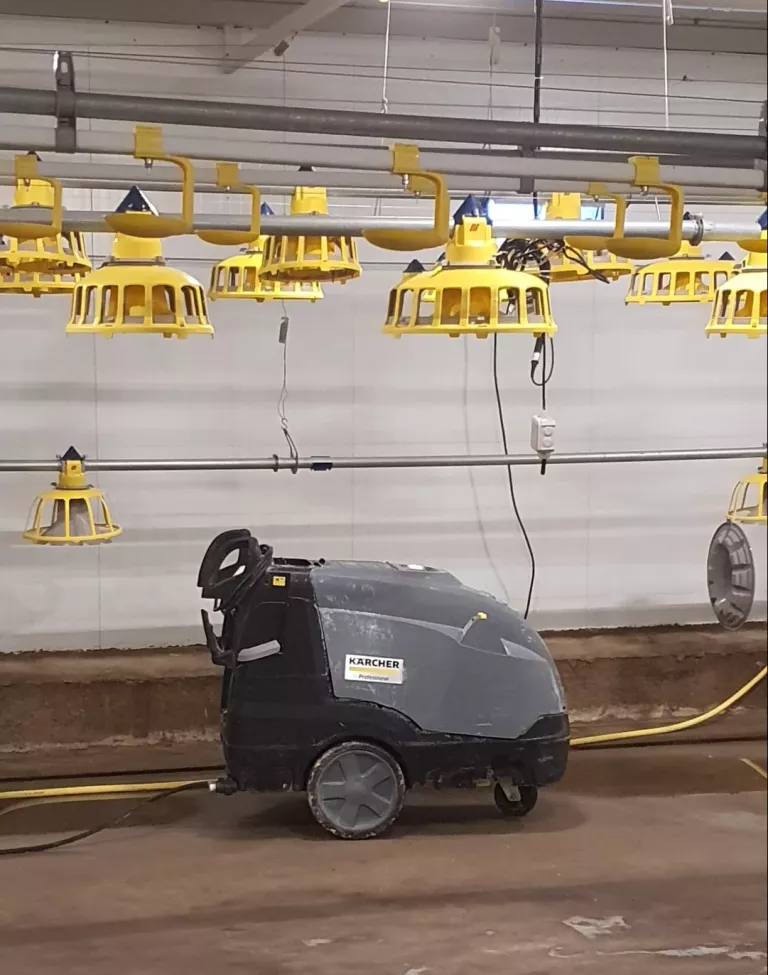
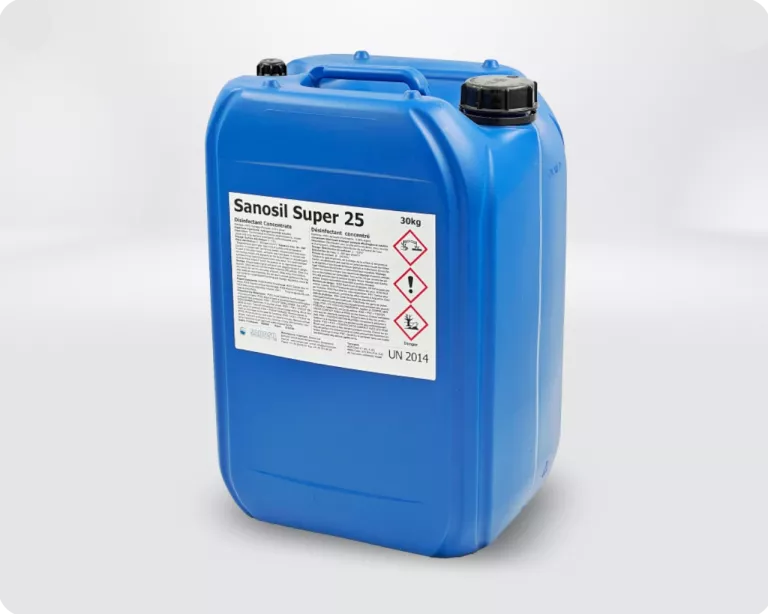
High-concentration disinfectant for surface, water, and room disinfection in animal stables
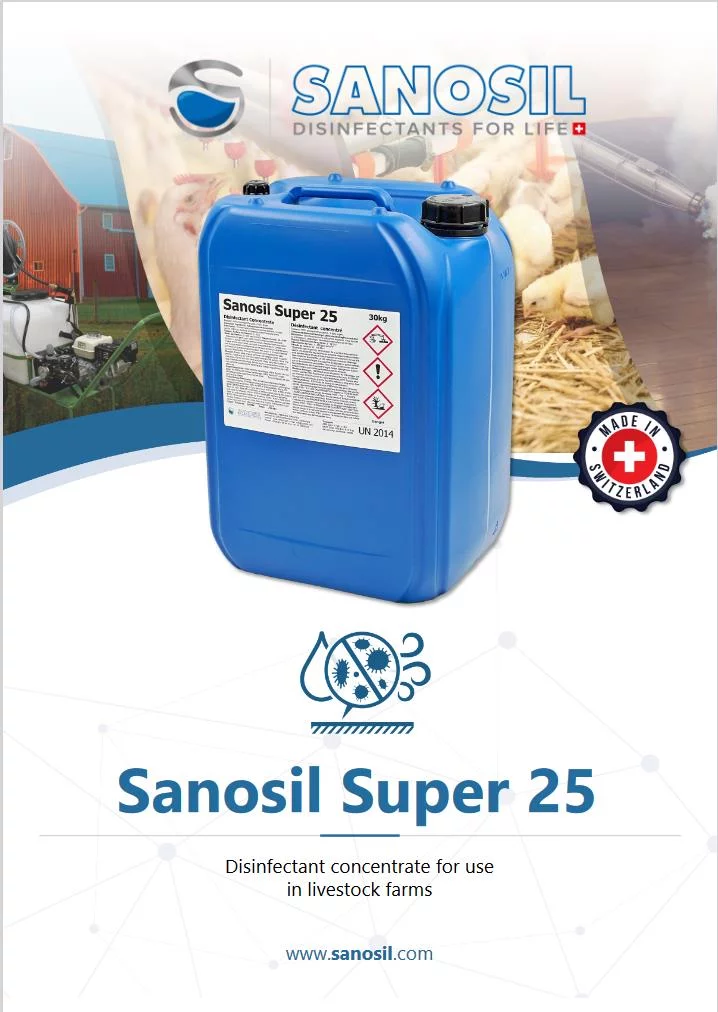
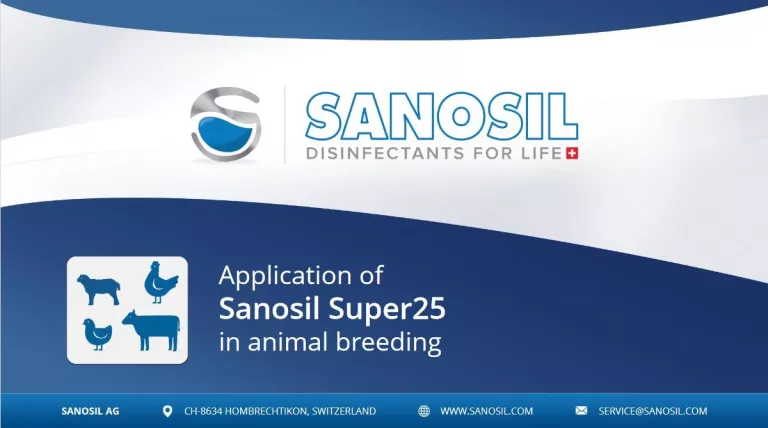
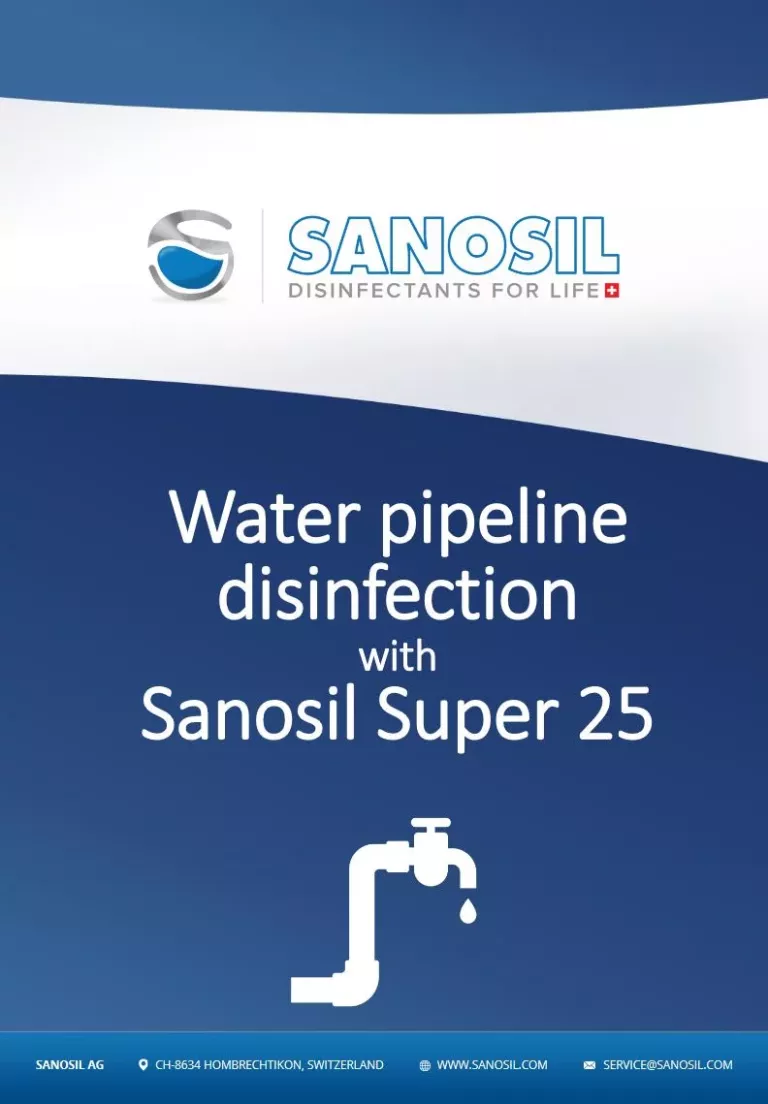
Various problematic pathogens can occur in poultry farming, posing threats to animal health and production performance. Commonly mentioned pathogens include:
These problematic pathogens require effective barn disinfection and appropriate hygiene measures to prevent their spread and protect poultry health. Sanosil disinfectants Super 25 and S015 have been successfully tested against all these pathogens.
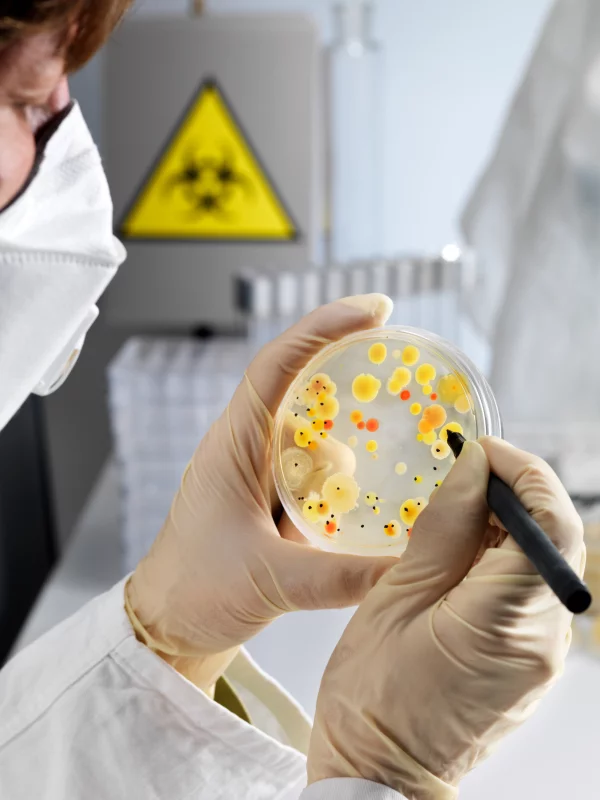
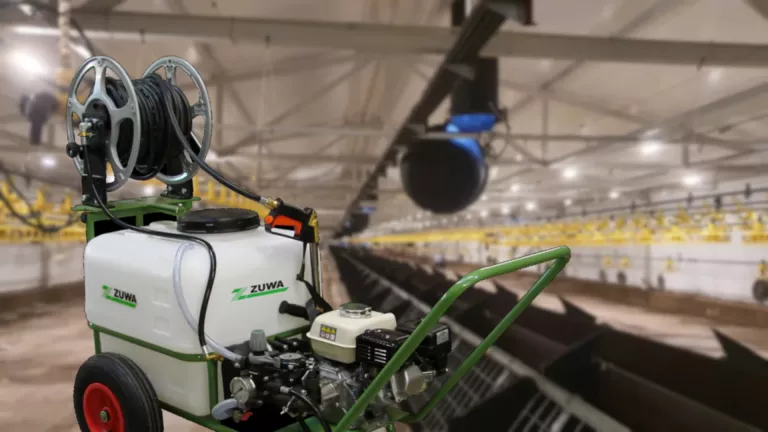
Using a sprayer allows for efficient distribution of Sanosil disinfectants in animal sheds. Initially, the shed facilities must be thoroughly cleaned to remove dirt and organic residues. Subsequently, the Sanosil disinfectant is prepared and filled into the sprayer.
The disinfectant is then sprayed evenly over the surfaces in the sheds, with particular attention paid to hard-to-reach areas.
Using a thermal fogger is another effective method for applying Sanosil disinfectants in animal sheds. Thermal foggers generate fine mist particles that disperse easily in the air, allowing for uniform disinfection of stall surfaces.
To apply Sanosil with a thermal fogger, an appropriate disinfectant solution is filled into the device. The thermal fogger is then brought into the empty, well-prepared, and dry shed, and the mist is evenly dispersed throughout the space. The fine mist penetrates even into hard-to-reach areas, ensuring comprehensive disinfection including the air. However, it’s crucial to note that even small traces of dirt can hinder the mist from reaching surfaces effectively. Therefore, thorough cleaning prior to application is essential. Thermal fogging is ideally used as a complementary treatment to spray disinfection rather than a standalone method. When using fogged disinfectants, occupational safety and appropriate protective equipment must be observed.
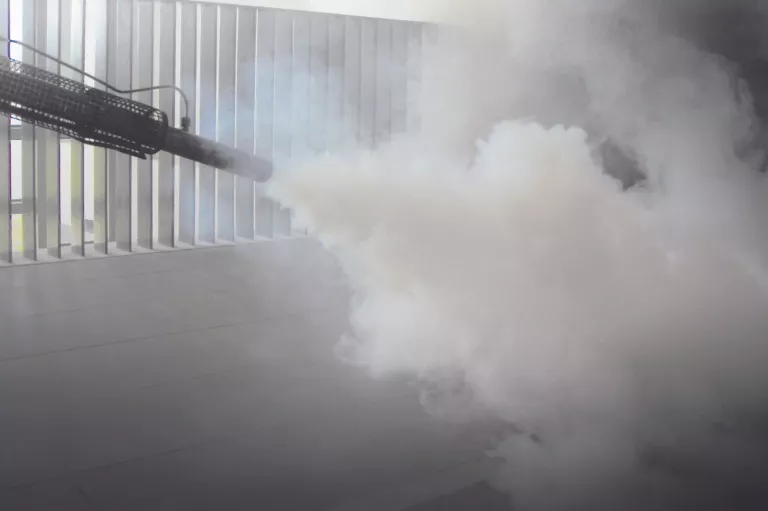
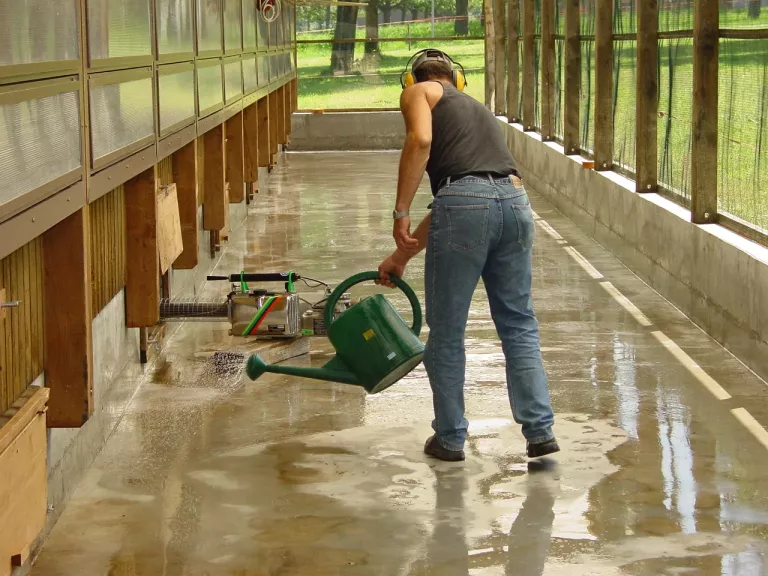
The manual application of Sanosil disinfectants with a watering can is a suitable method for disinfecting smaller surfaces or specific areas in animal stables. First, the areas to be disinfected should be thoroughly cleaned to remove dirt and organic residues. The disinfectant is then poured evenly over the surfaces, taking care to wet all relevant areas thoroughly
Disinfecting hatching eggs with Sanosil S003 or a suitably diluted solution of Sanosil S015 or Super 25 is a proven method to deactivate pathogens on eggshells, thereby reducing infection pressure on freshly hatched chicks.
This allows for the straightforward replacement of carcinogenic formaldehyde, which is still regularly used for this purpose by nebulization. Eggs can be manually immersed in a disinfection solution. After a brief contact time, the eggs can then be placed into the incubator.
Another method is egg disinfection through spraying. Here, the Sanosil disinfectant is evenly applied onto the eggshells using a sprayer. This method enables efficient and time-saving disinfection of large quantities of hatching eggs.
Sanosil disinfectants allow for effective egg disinfection without damaging the eggshells or the embryos inside. Disinfecting hatching eggs with Sanosil helps improve hygiene and the health of the chicks. By reducing microbial contamination on the eggshells, the risk of infections and diseases is minimized, potentially leading to higher chick survival rates.
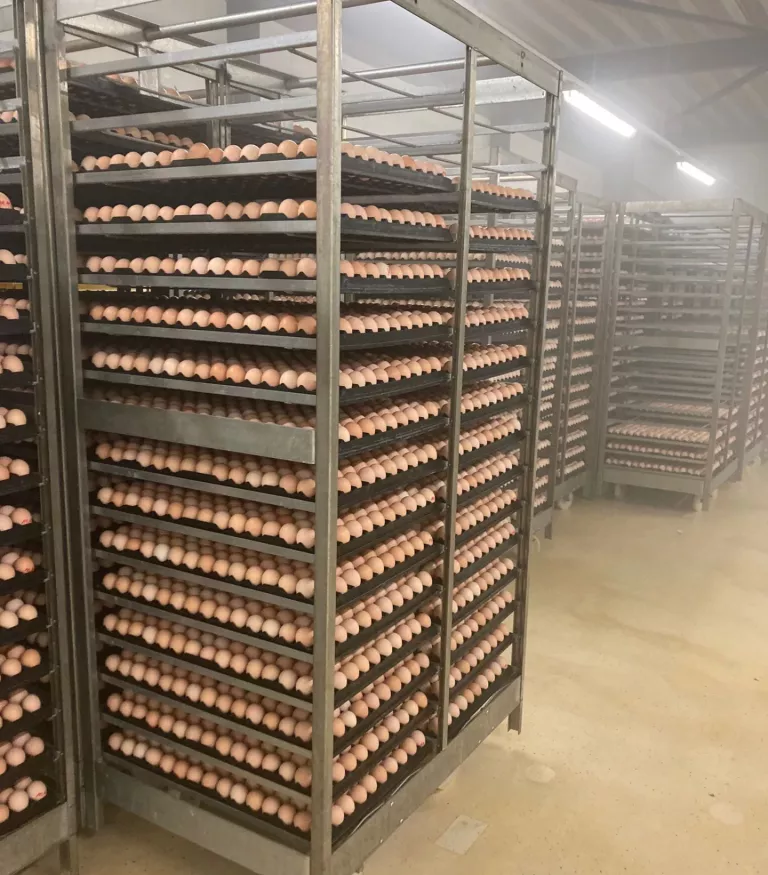
Our core competencies include the manufacturing and application consulting of disinfection products for water systems, surfaces, and air (complete room disinfection).